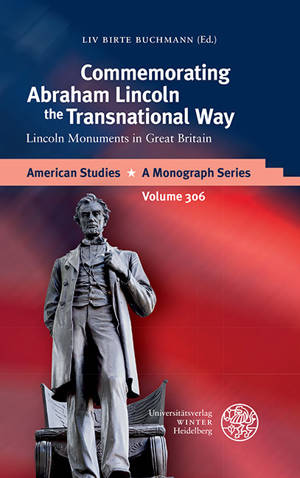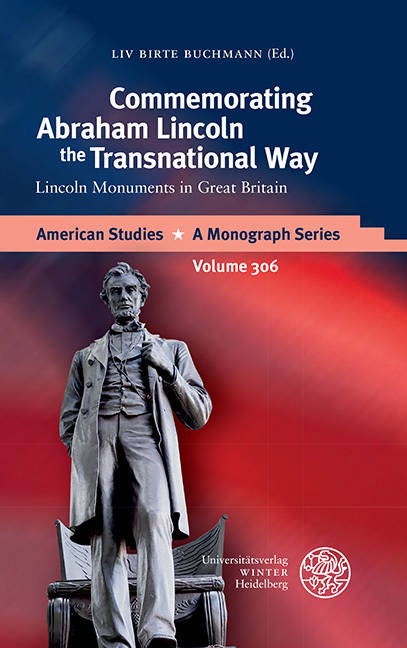
- Afhalen na 1 uur in een winkel met voorraad
- Gratis thuislevering in België vanaf € 30
- Ruim aanbod met 7 miljoen producten
- Afhalen na 1 uur in een winkel met voorraad
- Gratis thuislevering in België vanaf € 30
- Ruim aanbod met 7 miljoen producten
Zoeken
Commemorating Abraham Lincoln the Transnational Way
Lincoln Monuments in Great Britain
LIV Birte Buchmann
€ 85,45
+ 170 punten
Omschrijving
The book investigates the genesis, aesthetics, and ceremonial unveilings of three statues of Abraham Lincoln, the 16th American President, in Edinburgh (1893), Manchester (1919), and London (1920). Using methodology from the fields of Visual Culture Studies, Memory Studies, and Transnational American Studies, the analysis demonstrates how the British and American Memory Actors used the installations of the Lincoln statues and the ceremonial unveiling performances to construct an imagined transnational collective identity by turning Abraham Lincoln into a transnational symbol unifying the peoples of the United Kingdom and the United States of America. Therefore, the statues not only function as manifestations of this Anglo-American friendship, but also as factors in the cultural construction and emergence of the Great Rapprochement on a racially induced basis which would later turn into the Special Relationship.
Specificaties
Betrokkenen
- Auteur(s):
- Uitgeverij:
Inhoud
- Aantal bladzijden:
- 311
- Taal:
- Engels
- Reeks:
- Reeksnummer:
- nr. 306
Eigenschappen
- Productcode (EAN):
- 9783825347109
- Verschijningsdatum:
- 25/07/2020
- Uitvoering:
- Hardcover
- Formaat:
- Genaaid
- Afmetingen:
- 135 mm x 211 mm
- Gewicht:
- 452 g

Alleen bij Standaard Boekhandel
+ 170 punten op je klantenkaart van Standaard Boekhandel
Beoordelingen
We publiceren alleen reviews die voldoen aan de voorwaarden voor reviews. Bekijk onze voorwaarden voor reviews.











